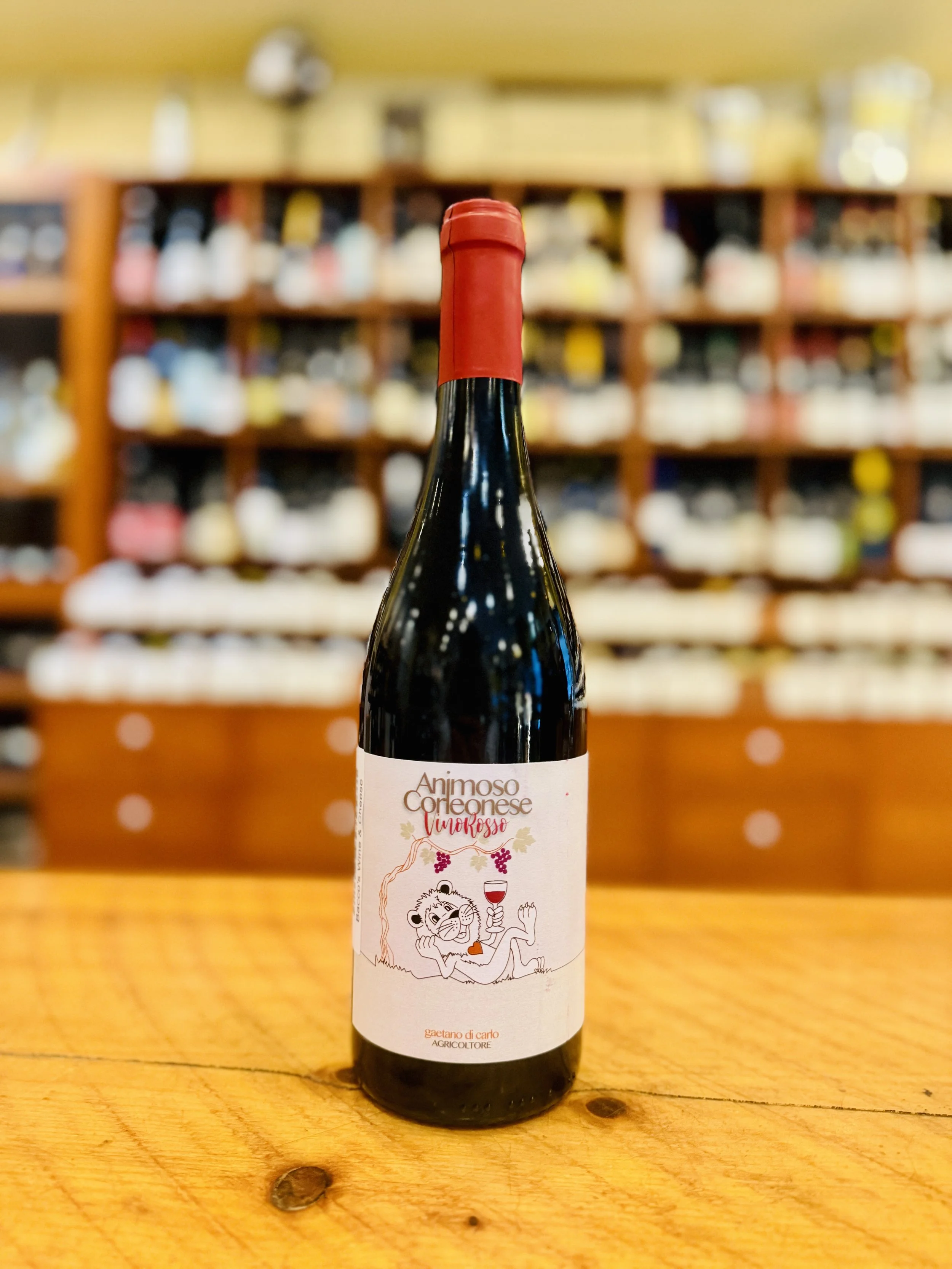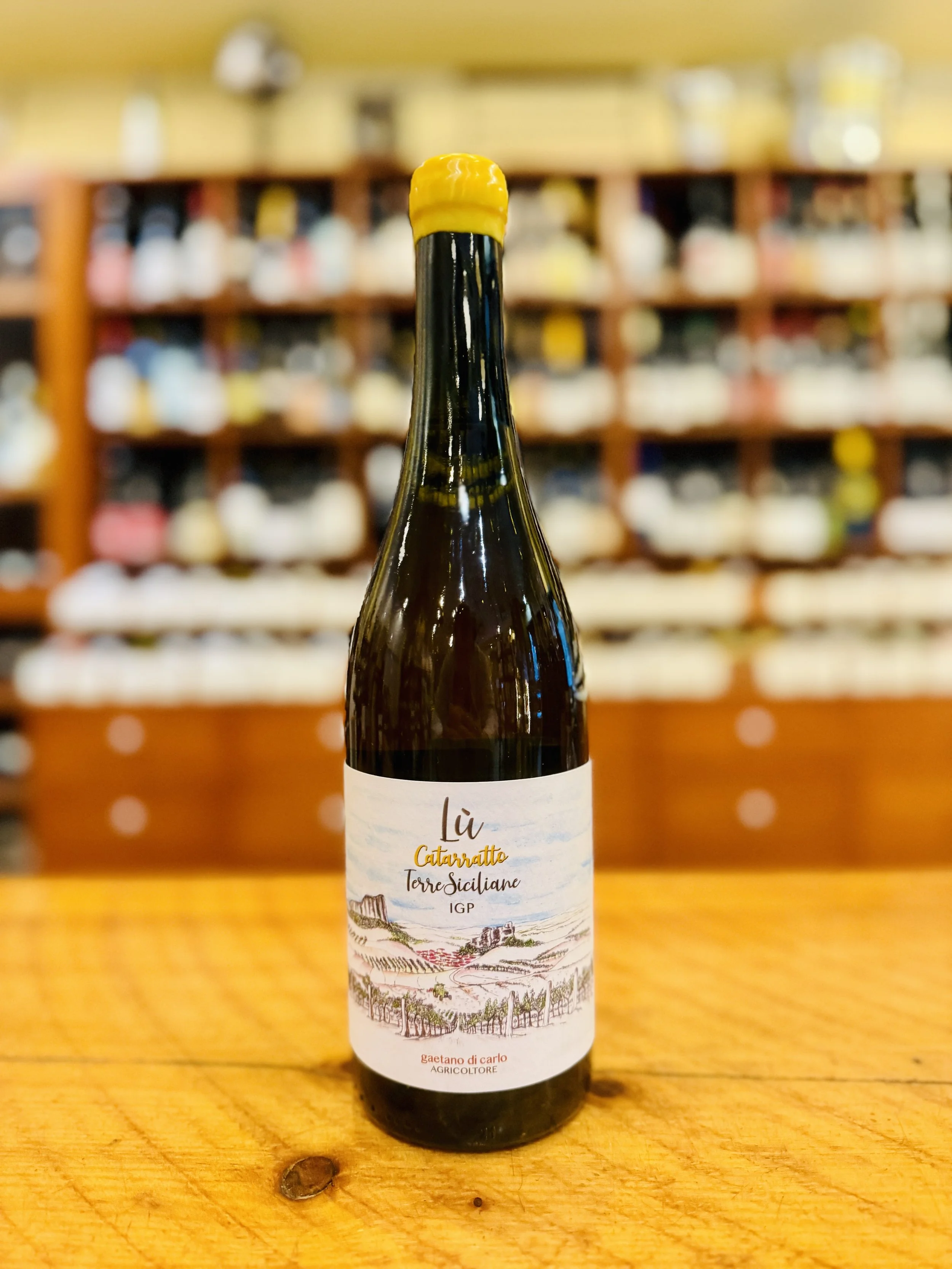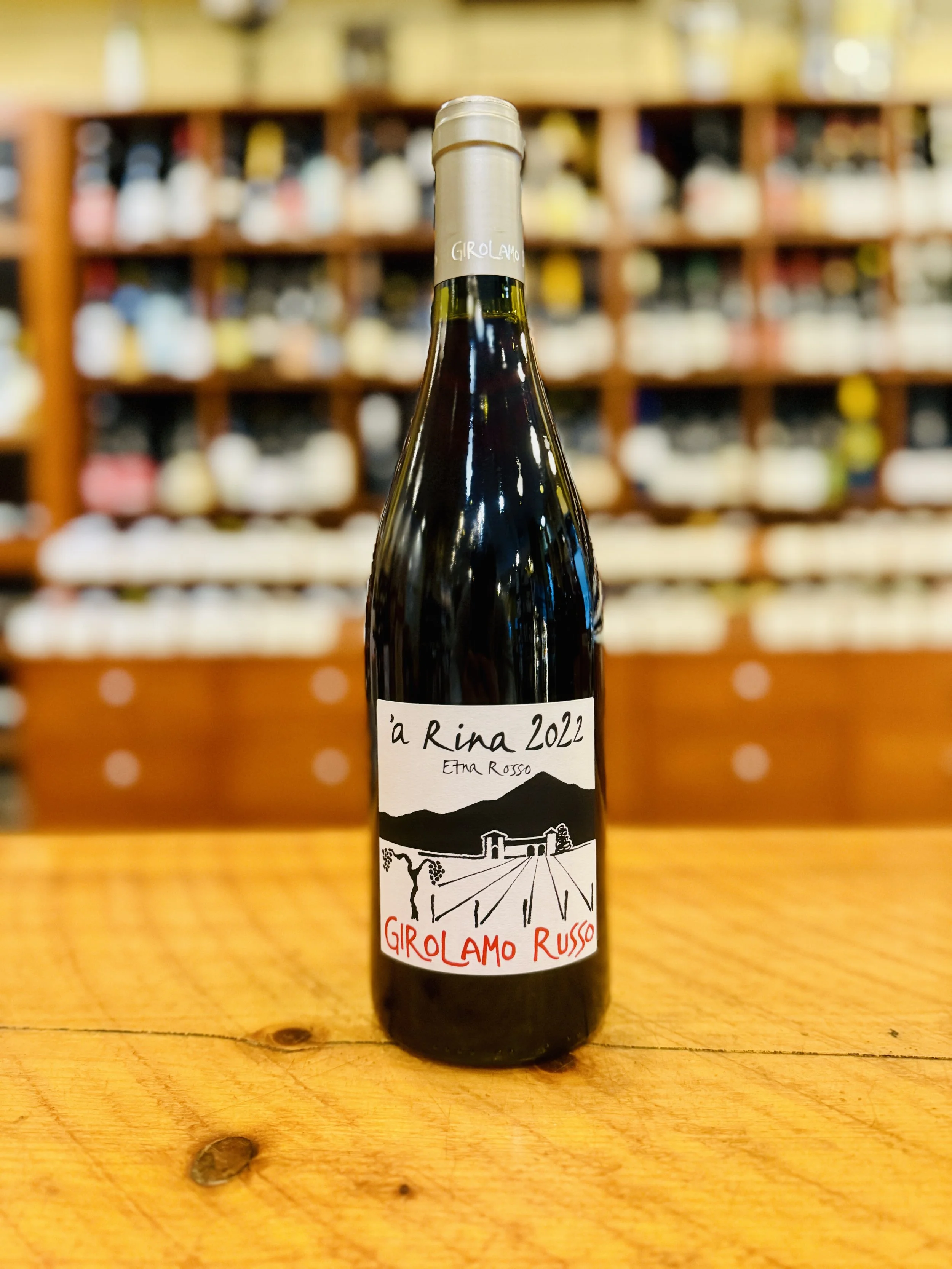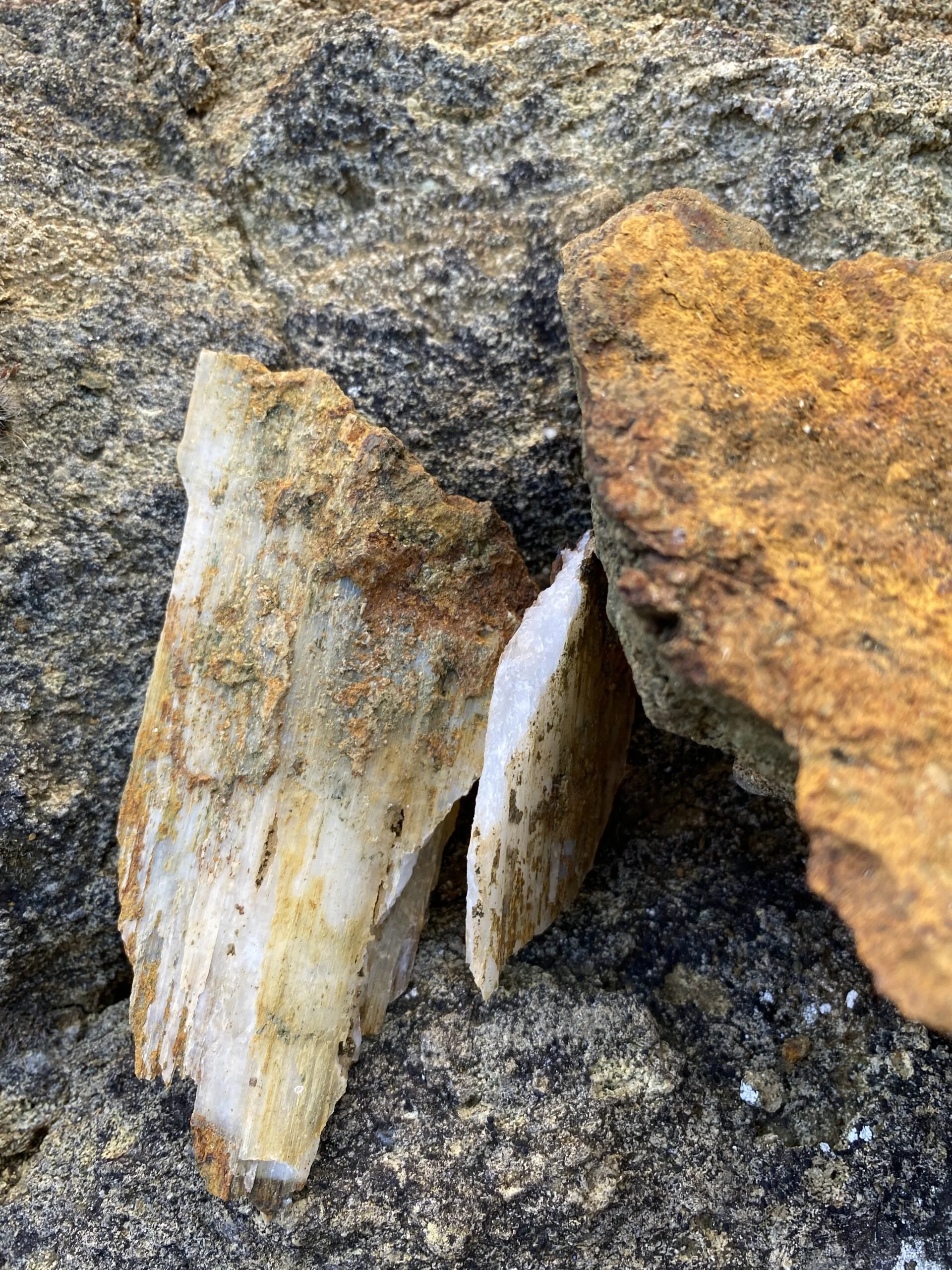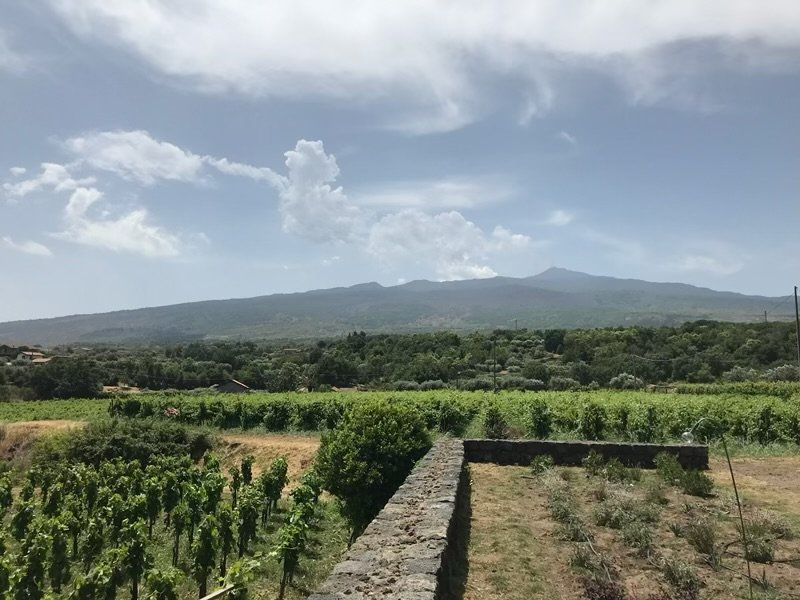
January 2025
Oh Sicilia!
Bacco’s Wine Club
January 2025
This month, an island escape to Sicily, a land of dreams deferred and the volcano that looms over it.
We are already quite tired of this winter weather, so we’re dreaming of warmer days where an island escape seems only fitting, but in this case Sicilia isn’t breaking our heart, it’s stealing it away.
Gaetano di Carlo
Animoso Corleonese
Vino Rosso
Corleone
Sicily
Italy
Farming: Sustainable, Practicing Organic
Yes, Corleone is a real place, and not just the terrifying and magnetic crime family brought to life by Francis Ford Coppola, Marlon Brando, and Al Pacino in The Godfather. You may have even seen it in The Godfather Part II, when Michael returns to his family homeland after causing quite a stir in New York City - but hey, no spoilers if you haven’t seen it.
Sicily is picturesque, and it indeed contains multitudes. There is the history of the Mafia here, where power was said to be largely concentrated, given its distance from the governing bodies in Rome and the rest of northern Italy. Indeed, even a glance through Italian history can tell you there is an entrenched divide, both in culture and distance, between the Italy of the North, and the Italy of the South.
Sicily, too, has a history rife with division and fractious cultural collisions. Throughout its long history as an island in the middle of the Mediterranean, it was a stopping point for Phonecians, Carthaginians, Romans, Greeks, and Arabic peoples. ‘
Thanks to its central location for trade and the rich condition of its soils, Sicily became a land where farming was as crucial to its cultural heritage as the interstate highway became to ours, paving the way toward economic prosperity.
Thanks to war and the urban flight of the 20th century, Sicily went through a deep economic depression, and that’s when external forces like the Mafia took hold.
Now, however, there is an agricultural resurgence, thanks to more people returning to their homeland, embracing the unique qualities that make everything from Sicilian olives to Sicilian wines a part of their cultural and economic future.
About Gaetano di Carlo
Gaetano di Carlo’s family has been working on this land for three generations, a geological rarity, even in Sicily. To quote Gaetano himself
“After visiting the producing areas of the best wines in the world, from Champagne to Burgundy via the Loire to Bordeaux etc... and not least, visited our best Italian winegrowing areas and after having done a careful pedoclimatic study, I discovered that in the Corleonese there is a unique territory for agricultural production but above all for the wine!
The vineyards I cultivate are located at 750 meters above sea level. on affected soils from the conjunction of two types of limestone...
The glauconitic calcarenites of Corleone, geologically defined as such because they are found only in this territory and the limestones of the queen of western Sicily Rocca Busambra, so called because the highest peak of the Sicani Mountains, formed by nodular limestones with ammonites”
About Animoso Corleonese Vino Rosso
Gaetano’s first foray into red wine is made with Nero D’Avola, an oft-overlooked varietal that tends to be most prominent in southeast Sicily.
Here, in Corleone, thanks to the rich limestone soils and the cooling influence of the mountainous terrain, the wine is fresh, lively, and bright
Gaetano di Carlo
“Lu”
Catarrato
Corleone
Sicily
Italy
F arming: Organic/Sustainable
This is Gaetano’s flagship wine, the first one that he produced back in 2019 when he returned to his family’s land to begin winemaking in earnest, and one that takes full advantage of its geological roots.
In homage to this natural pairing and its heritage, “Lu” is so named as a homage to Gaetano’s family, “Lu” being short for Luca, both the name of Gaetano’s father and Gaetano’s son.
Cataratto is perhaps most well-known as the prominent white grape of Sicily’s most prominent geological feature, Mount Etna, where it thrives in the mineral-rich volcanic soil, but it is just as comfortable here, taking on the qualities of some of Italy’s most famous mountain white wines and even those of French Chablis.
Notes on the Wine:
“Lu” is sourced from vines of a minimum of 30 years of age. This wine is aromatically intense, offering vibrant notes of citrus, white flowers, and crushed chalk. The palate is fresh and lively with flavors of ruby red grapefruit and tangerine that mingle with a delightful acidity and fine minerality. The finish is persistent and complex
A sample of Gaetano’s limestone soils!
Girolamo Russo
‘a Rina’
Etna Rosso
Mount Etna
Sicily
Italy
Farming: Practicing Organic
Giuseppe Russo had been studying to be a pianist when his father Girolamo died unexpectedly in 2005. He then came back home to Mount Etna to take over the family vineyards. Since that time he has been organically farming these old vines, some of them more than 100 years old, and he has restored the old cellar under his house. He has 15 hectares of vines on the North side of Etna, around the town of Passopisciaro, including pieces of some famous ‘contrade’, as the historic localities are known here.
For Pinot Noir and Nebbiolo lovers, Nerello Mascalese is an exciting discovery. It can produce reds of impressive subtlety and structure, drinkable when young, and even better with a few years of age.
Giuseppe’s vineyards are planted on ancient lava flows called ‘sciare,’ which vary in age, mineral content, and topsoil composition, with underground pockets that allow water retention to keep the vines hydrated during the heat of the summer. The solid rock of these lava flows breaks down over time, eventually becoming loose enough that a plant’s roots can penetrate. All of the Etna DOC is at a relatively high elevation for red wines, more than 500 meters above sea level; to some extent, the elevation counteracts the effect of latitude, in terms of the mesoclimate around the vineyards.
A Note ‘a Rina’
All estate bottled fruit from a combination of Giuseppe’s different sites, roughly 90% Nerello Mascalese with 10% Nerello Cappuccio, all planted using massal selection. Vines range from 20 to 100 years of age, rooted in weathered volcanic lava flows on the north side of Mount Etna,
Elevation is between 650 and 800 meters (2150-2600 feet) above sea level, very high for red wines. Yields are very low, less than two tons per acre; the grapes are picked by hand in late October, brought to the cellar in Giuseppe’s home in Passopisciaro

